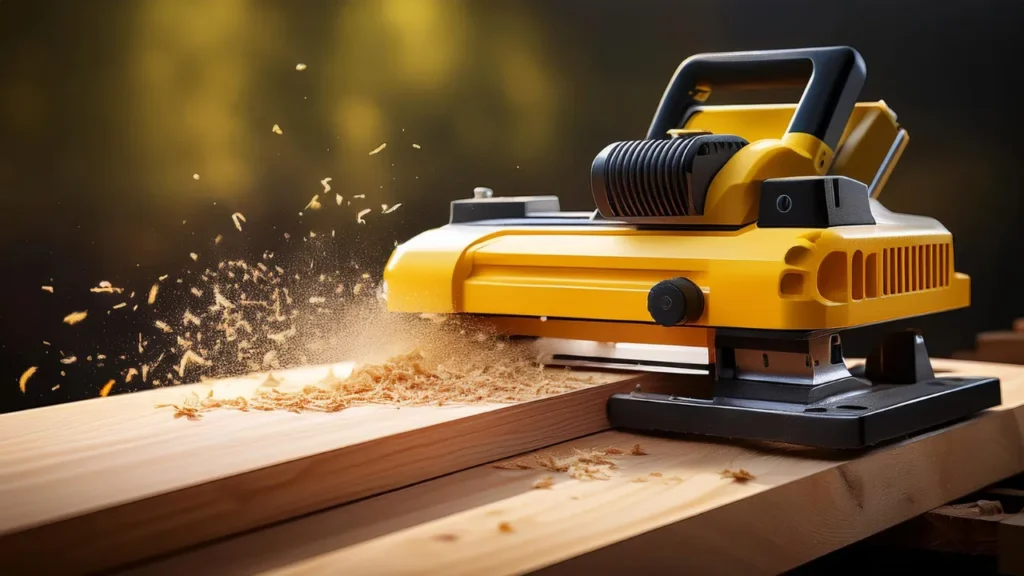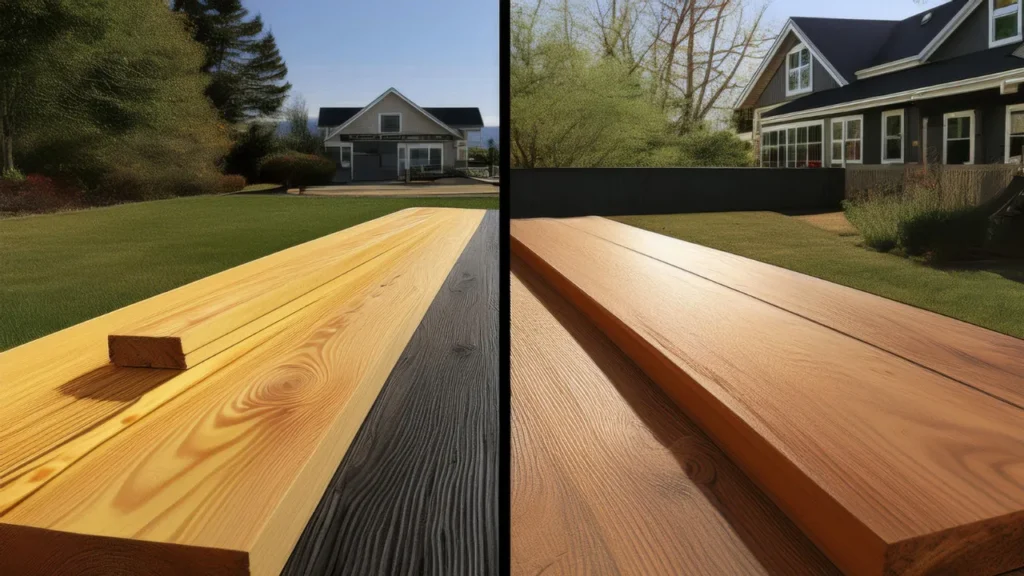Trex decking, known for its durability and aesthetic appeal, is a popular choice for homeowners. But what happens when you want to plane it? Specifically, can you plane Trex decking on a DW735? The simple answer is yes, but it’s not quite that straightforward. In this blog post, we’ll guide you how to plane Trex decking with a DW735 and give you some useful tips to make the job easier.
What is Trex Decking?
Trex decking is a popular choice for people who want a deck that’s easy to take care of and good for the environment. It’s made from a mix of recycled wood and plastic, which makes it strong and able to last a long time without fading, staining, or rotting. Unlike wood decks, Trex doesn’t need to be stained, sealed, or refinished regularly. It can handle tough weather and also resists mold, mildew, and bugs, making it a great option for outdoor spaces.
One of the best things about Trex decking is that it’s made from recycled materials. By using things like sawdust and plastic, Trex helps reduce waste and supports environmentally friendly building. This makes it a great option for anyone who wants a nice-looking deck without the upkeep of wood, while also being mindful of the planet.
What Is The DeWalt DW735 Planer?
The DeWalt DW735 is a powerful and easy-to-use thickness planer, great for both professional woodworkers and DIYers. It has a 15-amp motor that runs at 10,000 RPM, allowing it to smoothly plane boards up to 13 inches wide and 6 inches thick in one pass.
The planer comes with three blades that are easy to change, and it locks automatically for added safety. Its sturdy aluminum base ensures smooth and accurate cuts, while the fan-assisted system clears away wood chips to keep your work area clean. With its simple controls and portable design, the DW735 is a handy tool for all kinds of woodworking projects.
Can You Plane Trex Decking On Dw735?
Yes, it is possible to plane Trex decking with a planer like the DW735, there are several important considerations to keep in mind. Trex is a composite material made from recycled wood and plastic, which means it has different properties compared to traditional wood decking.

One potential issue with planing Trex is that the heat generated by the planer blades can cause the plastic component to melt or smear, leading to an uneven or damaged surface. Additionally, the abrasive nature of the composite material can cause excessive wear on planer blades, requiring more frequent blade replacements.
Another concern is that planing Trex may void the manufacturer’s warranty, as it can alter the surface and potentially compromise the integrity of the decking material. Trex recommends against planing or sanding their decking products, as it can remove the protective cap layer and expose the underlying composite material to potential weathering and degradation.
If you do decide to plane Trex decking, it is essential to use sharp, high-quality planer blades and to take light passes to minimize the risk of melting or damaging the material. It is also recommended to work in cooler temperatures and to frequently check the surface for any signs of melting or smearing.
Planing Trex Decking With The DW735
Now, let’s get into the nitty gritty of actually running Trex through your DW735. Trex is a dense composite material that contains wood fibers and plastic. This combination makes it very durable but also fairly abrasive.
What does that mean for your planer? Well, the good news is that Trex won’t gum up the works like some other materials might. You shouldn’t have any issues with the boards getting stuck or the planer becoming clogged.

However, that abrasiveness does take a toll on the planer blades. You’ll likely find that your blades dull more quickly when planing Trex compared to regular lumber.
So it’s a good idea to use an older set of blades that you don’t mind sacrificing. Definitely avoid using your sharpest, nicest blades on Trex if you can help it.
You might be wondering how thin you can plane the Trex down. According to our research and based on reports from other fellow woodworkers, Trex holds up quite well to being planed down to 1/4 inch or 7/16 inch thicknesses. You shouldn’t see any major splintering or delaminating.
As for the planer itself, running Trex through it shouldn’t cause any significant damage, especially if you’re only doing it occasionally. Just be aware that the additional wear on the blades and other components may shorten the machine’s lifespan to some degree.
Precautions & Safety Considerations
When using power tools like the DW735 planer and working with Trex composite decking, safety is really important. Always wear safety gear like glasses, ear protection, and gloves. The planer is noisy, and Trex can have sharp edges, so you need to protect yourself. Make sure your workspace has good airflow since cutting or planing Trex can create dust that isn’t safe to breathe in.
Keep the area clean to avoid trips and slips, and always follow the instructions for using the tools. Stand firmly and don’t stretch across the planer, as this can make you lose control. Never take off the safety guards, as they protect you from injury. Unplug the planer before cleaning or adjusting it. Be careful with the decking, as its edges can be sharp, and keep kids and pets away from the work area. Following these steps will help keep you safe and your project successful.
Pros & Cons Of Planing Trex Decking
Here are the pros and cons of planing trex decking:
Pros
- Possible To Plane: Trex decking can be planed using the DeWalt DW735. The planer is powerful enough to handle the composite material, which means you can achieve the desired thickness or finish.
- Time-saving: Planing your Trex decking can save you time, as you won’t need to manually sand or refinish the surface.
Cons
- Blade Wear: Trex decking contains abrasive materials that can cause faster blade wear. Planing this material may require you to use older blades or be prepared to resharpen or replace them after the job.
- Less Than Ideal Results: Planing Trex decking might not yield the most attractive results. You may need multiple passes to achieve the desired thickness, and the process could leave an uneven finish.
- Machine Impact: The abrasive nature of Trex decking can potentially reduce the lifespan of the blades and other planer components. Be prepared for possible maintenance or replacement costs.
Conclusion
In short, you can plane Trex decking with a DeWalt DW735, but you need to be careful. The material can dull blades quickly, and the heat might cause the plastic to melt, leading to a rough surface. Planing could also void the warranty. To avoid problems, use older blades, take light cuts, and work in cooler temperatures. While it’s possible to plane Trex, just be ready for extra wear on your blades and planer.